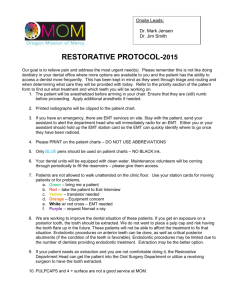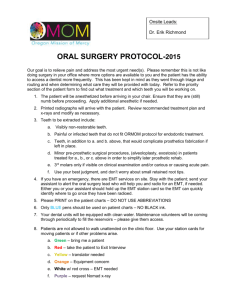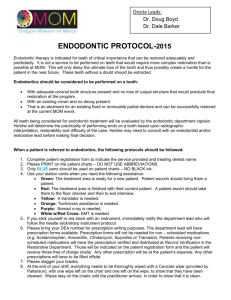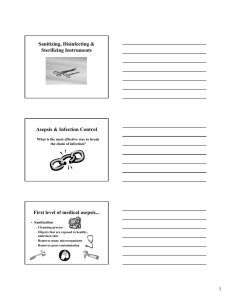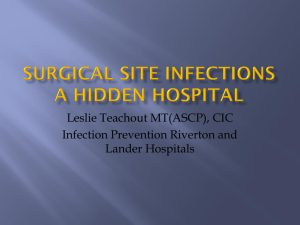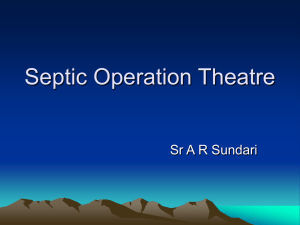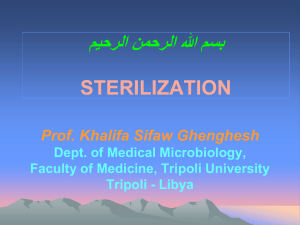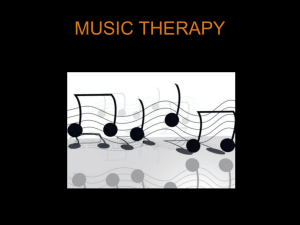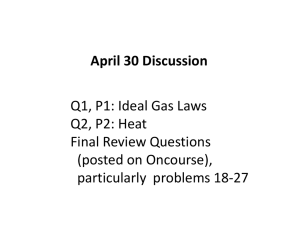OPERATIVE TRATMENT PROTOCOLS
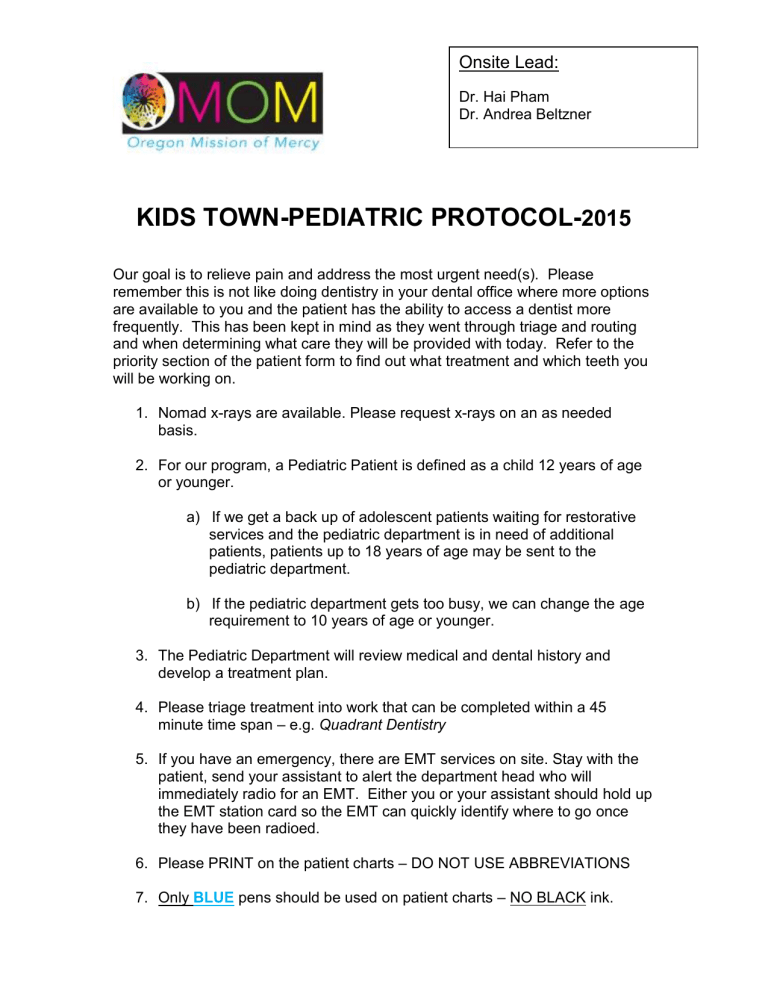
Onsite Lead:
Dr. Hai Pham
Dr. Andrea Beltzner
KIDS TOWN-PEDIATRIC PROTOCOL-
2015
Our goal is to relieve pain and address the most urgent need(s). Please remember this is not like doing dentistry in your dental office where more options are available to you and the patient has the ability to access a dentist more frequently. This has been kept in mind as they went through triage and routing and when determining what care they will be provided with today. Refer to the priority section of the patient form to find out what treatment and which teeth you will be working on.
1. Nomad x-rays are available. Please request x-rays on an as needed basis.
2. For our program, a Pediatric Patient is defined as a child 12 years of age or younger. a) If we get a back up of adolescent patients waiting for restorative services and the pediatric department is in need of additional patients, patients up to 18 years of age may be sent to the pediatric department. b) If the pediatric department gets too busy, we can change the age requirement to 10 years of age or younger.
3. The Pediatric Department will review medical and dental history and develop a treatment plan.
4. Please triage treatment into work that can be completed within a 45 minute time span
– e.g.
Quadrant Dentistry
5. If you have an emergency, there are EMT services on site. Stay with the patient, send your assistant to alert the department head who will immediately radio for an EMT. Either you or your assistant should hold up the EMT station card so the EMT can quickly identify where to go once they have been radioed.
6. Please PRINT on the patient charts
– DO NOT USE ABBREVIATIONS
7. Only BLUE pens should be used on patient charts – NO BLACK ink.
8. Your dental units will be equipped with clean water. Maintenance volunteers will be coming through periodically to fill the reservoirs
– please give them access.
9. Patients are not allowed to walk unattended on the clinic floor. Use your station cards for moving patients or for problems. a. Green
– bring me a patient b. Red – take the patient to Exit Interview c. Yellow – translator needed d. Orange
– Equipment concern e. White w/ red cross – EMT needed f. Purple – request Nomad x-ray
10. It is recommended that amalgam restorations be used
– especially in posterior teeth. Not only is it quicker to put in an amalgam than a composite, but in the majority of cases it will serve the patient longer.
However, we are not going to say that you cannot do composites, and limited colors of composite material will be available. There are approximately twenty (20) curing lights available.
11. Patient escorts should take patients to record verification and then to their guardian when treatment is complete and then on to exit interview
– unless the guardian is being treated, then the guardian and the child should be taken to the patient waiting area for the guardian to check in.
The escort should obtain the clipboard and patient record from the practitioner and take that to the patient education and exit interview area when escorting patients there or give it to the guardian if delivering the patient to a guardian who has yet to receive treatment themselves.
12. Some translators are available. (Spanish, Russian, Mandarin).
13. If you stick yourself or are stuck with an instrument, immediately notify the department lead who will follow the needle stick/sharp instrument protocol.
14. Please bring your DEA number for prescription writing purposes. The department head will have prescription forms available; however, you are welcome to bring your own forms. Prescription forms will not be needed for Acetaminophen, Amoxicillin, Clindamycin, Ibuprofen or Tramadol.
Those will be indicated on the patient registration form and the patient will receive those free of charge onsite. Any other prescription will be at the patient’s expense.
15. Please stagger your lunch breaks. While you are on break, another dentist may move into your chair so patient flow isn’t disrupted.
STERILIZATION and INSTRUMENTS
1) Remove all sharps/burs from the instruments chairside before taking them to sterilization . Place all sharps in the sharps containers.
Instruments are to be put back into the original cassette then cassettes go into a lidded plastic tote for transport to sterilization. Do not walk on the clinic floor with sharps No exceptions.
2) You or your assistant are responsible for making sure that your personal instruments are identified as yours when they go through sterilization. To ensure this, drop your instruments off at the side of the table marked “Dirty
Personal Instruments” and have your name written on the sterilization pouch(es) and leave the pouch(es) on the tray with the instruments. You will pick them up from at the “Clean Personal Instruments” station.
3)
If you are using AMOM instruments, be sure to take them to the “Dirty
AMOM Instruments” side of sterilization.
4) Broken AMOM instruments should be returned to sterilization and reported as broken, do NOT throw them away.
LASTLY, PLEASE BE FLEXIBLE and THANK YOU for participating today.
